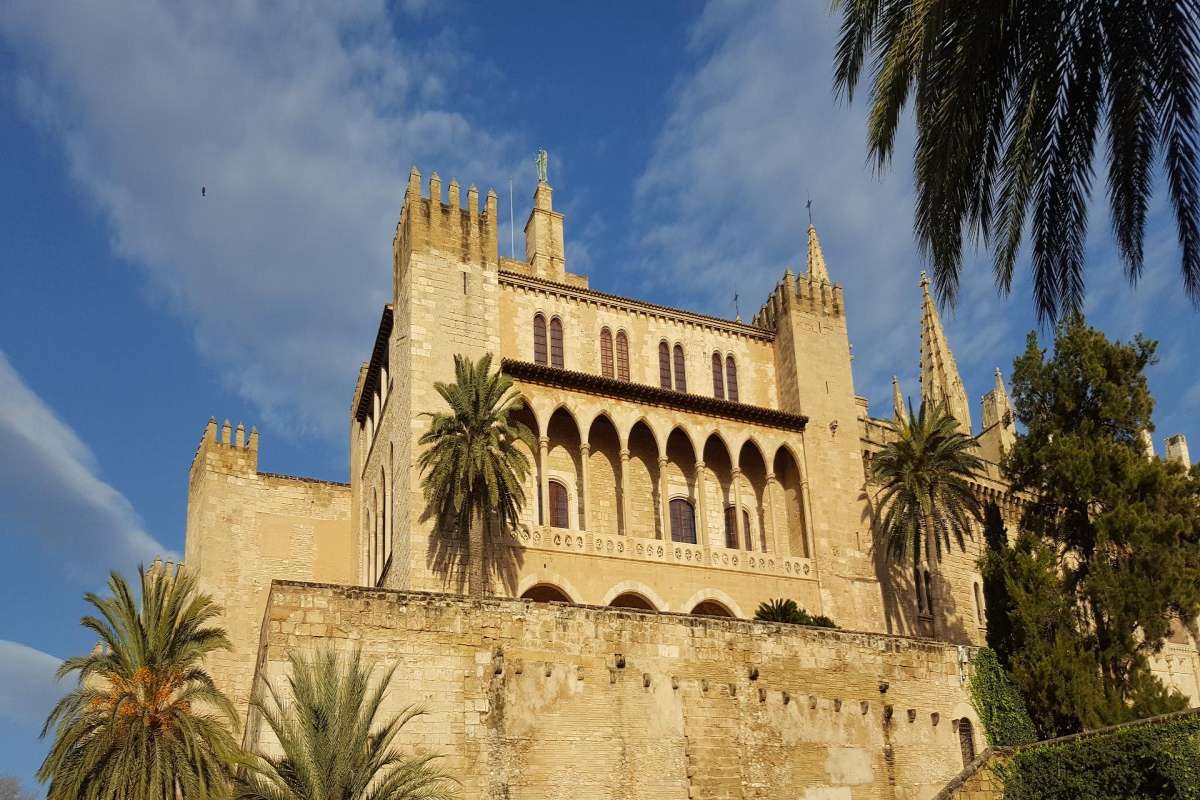
History and legend of the almudaina palace
The Almudaina Palace seems to compete with the Cathedral of Mallorca for absolute prominence on the façade of Palma Bay. Both have their art, their stories, and their legends. Today, we focus on the former.
An Alchemist in the Angel Tower of the Almudaina Palace
The City of Mallorca once had its own alchemist for a brief period. His name was Jaume de Lustrac, and he was of French origins. John I The King, hired his services and installed him in the Angel Tower of the Almudaina Palace in 1395 when the palace served as the royal residence.
The alchemist's objective, apart from being an astrologer, a bit of a chemist, and quite mystical, was twofold: to find the Philosopher's Stone which, regardless of what the Harry Potter saga may have led the public to believe, could convert simple metals into gold, and to find the elixir of eternal youth, which kings and the powerful sought.
Just a year later, the king died, and he was succeeded by his brother Martí I, who labeled the alchemist as a fraud and had him imprisoned. Challenging Catholicism was difficult in those times; however, the queen intervened on his behalf, and the Frenchman returned to his homeland.
The Weathervane Angel of the Almudaina Tower
When Jaime I conquered Mallorca, he maintained the Muslim tradition of having the island's governor or highest authorities reside in the Almudaina Palace.Naturally, the Arabic symbols were replaced with Christian motifs, and one of them, perhaps the most important, is the angel on the tower.
The construction didn't seem very fortunate: it was struck by lightning in 1305 and again in 1431. It caught fire in 1572, and during the Lisbon earthquake in 1755, its height was reduced to anticipate a catastrophe. In 1581, another earthquake forced further reduction of the tower, making it difficult to determine if the weathervane angel has always been the same or has also experienced the twists of fate.
The angel turned with the wind in a way that ships relied on its movement when maneuvering within the harbor. It was such an important figure that it even had its own saying: if someone was like "the angel of the palace," they were undoubtedly a fickle person, constantly changing their ideas and decisions.
The Treasure of Puig de Fátima
One of the most recurring legends of the Almudaina is that of the Treasure of Puig de Fátima.
When the vali Abu Yahia prepared the palace's resistance against the advance of King Jaime I, he decided to protect his daughter and entrusted Fátima, her fiancé, with taking her, her maids, and the treasure that would serve as her dowry to the mountain that is now Puigpunyent.
The princess and her entourage hid in a cave, where they spent their time telling stories and trying on jewelry and dresses. Towards the end of December, they heard a rumble caused by the collapse of the walls of Medina Mayurqa. The Moorish princess screamed, causing a collapse that trapped them inside with the fabulous treasure.
It is said that every Midsummer's Eve, at midnight, the cave opens, and a golden bull emerges, circling Puig seven times. Only if the bull takes a piece of blessed bread and candles are lit on each of its horns will the cave open again, revealing the secret of its treasure.
